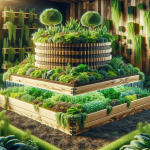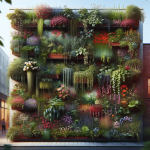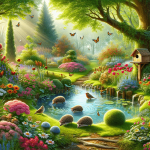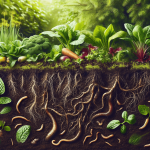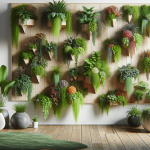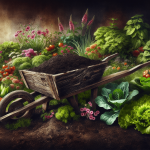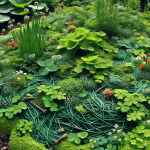This post may contain affiliate links. As an Amazon Associate, we may earn commissions from qualifying purchases.
How do you design a garden that attracts hummingbirds?
Alright, so you’ve got a backyard, a passion for all things tiny and winged, and a bit of free time on your hands. You’re thinking, “How do I design a garden that attracts hummingbirds?” It’s a question loaded with possibilities, isn’t it? And, hey, who wouldn’t want these mysterious, shimmering creatures zipping around their flowers?
It turns out, a hummingbird-friendly garden isn’t just about plunking a red plastic feeder in the middle of the yard and calling it a day. There’s an art to it, a science even. So, let’s roll up our sleeves (or maybe put on our gardening gloves) and get into the nitty-gritty of creating a hummingbird haven.
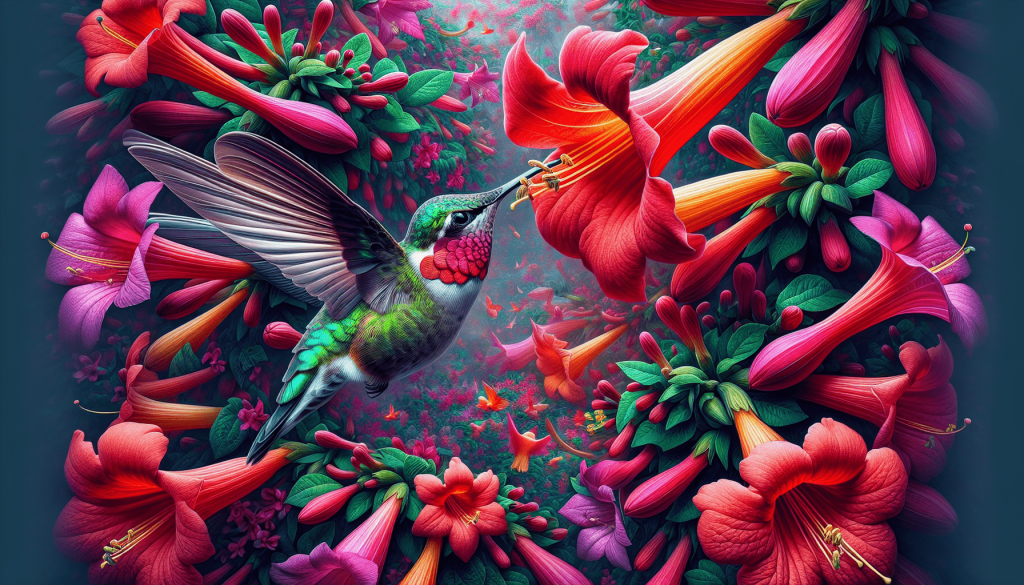
Knowing Your Hummingbirds
Hummingbirds are fascinating little avian gems, and to truly design a garden that attracts them, you should get to know a bit about these tiny dynamos.
Hummingbird Species
Depending on where you live, different species of hummingbirds might flit through your garden. North America has about 15 species that are commonly sighted. The Ruby-throated Hummingbird, for instance, is quite the eastern darling, whereas the Anna’s Hummingbird tends to claim the West Coast as its domain. Do a local birdwatching survey to find out which species frequent your area. This knowledge will guide your plant and feeder choices.
Migration Patterns
Most hummingbirds are migratory, seeking warmth and nectar-rich blossoms. Understanding their migration patterns helps you know when to expect them. For example, if you live in Texas, you’ll likely see Ruby-throated Hummingbirds around spring and fall feeding on their way to and from Central America. With this migration schedule, your garden should be primed with blooming flowers during these times.
Choosing the Right Plants
Ah, the flora. This is the bread and butter (or nectar and pollen) of your hummingbird garden.
Native Plants
There’s something to be said for keeping it local. Native plants are those that occur naturally in your region and are perfectly adapted to the local climate and soil conditions. Hummingbirds have evolved alongside these plants, making them a natural choice for attracting these birds.
Here’s a quick comparison of some native plants across different regions:
| Region | Flower Type | Example |
|---|---|---|
| Eastern U.S. | Trumpet-shaped | Trumpet Creeper |
| Western U.S. | Tubular blooms | California Fuchsia |
| Central U.S. | Red flowers | Scarlet Beebalm |
| Southeastern U.S. | Tropical-looking | Coral Honeysuckle |
Long-blooming Flowers
Choose plants that have a long blooming period. Hummingbirds burn tons of calories and need a steady food source. Think of flowers like Salvias, which keep blooming and offering sustenance over several months.
Variety and Diversity
You wouldn’t want to eat the same meal every day, and neither would hummingbirds. Incorporate a mix of perennials, annuals, shrubs, and vines to create a diverse garden. Flowers that bloom at different times also ensure that something is always in bloom, offering a year-round buffet.
Strategic Garden Layout
Now, let’s talk about the feng shui of your garden.
Sun and Shade
Hummingbirds are warm-blooded, needing warmth but also appreciating some cool escapes. Design your garden with both sun and shade areas. Position taller plants or trees to create shady spots without totally obscuring the sunny ones.
Layers and Levels
Hummingbirds like to flit from flower to flower, often preferring a vertical dining experience. Create layers with taller plants in the back and shorter ones in the front, or mix heights throughout your garden. Vines growing on trellises bring in height, while low-lying ground covers offer an intricate maze of blooms.
Water Features
Hummingbirds don’t need deep pools but do appreciate shallow water sources. Mr. Sedaris might suggest a mini-birdbath with a gentle bubbler or mister. Hummingbirds sometimes like a little sprinkle to freshen up their feathers, so it can double as a bath and a drinking spot.
The Nectar Factory: Hummingbird Feeders
While the plants do most of the heavy lifting, a well-maintained feeder can go a long way in keeping the hummingbirds coming back.
The Ideal Feeder
Select a feeder with bright red accents—yes, hummingbirds are attracted to red. Avoid yellow, as this color can attract bees. Make sure your feeder is easy to clean because old nectar can get moldy and make your visitors ill.
Homemade Nectar Recipe
Skip the store-bought nectar, which can contain additives. Instead, make your own by mixing one part white granulated sugar with four parts hot water. Stir until dissolved and let it cool before filling the feeder. Remember, no honey or artificial sweeteners—hummingbirds don’t appreciate fancy sugars.
Maintenance
Clean your feeder with warm water (no soap) every few days and replace the nectar to ensure it’s fresh and mold-free. This labor might sound tedious, but clean nectar keeps your garden bustling with hummers.
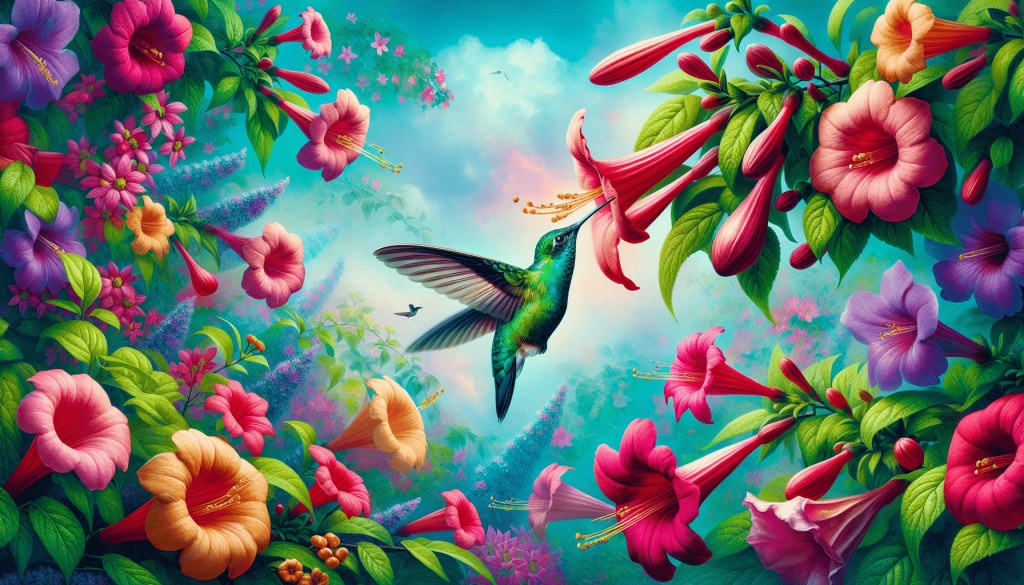
Creating a Safe Space
Your garden should be as welcoming as it is safe.
Predator Protection
Cats, larger birds, and even some rodents can pose a threat to hummingbirds. Plant densely to give them plenty of hiding spots. Use netting if necessary, and keep feeders out in the open where predators can’t easily ambush the birds.
Avoid Chemicals
Skip the pesticides and chemicals. Hummingbirds eat small insects for protein, and the last thing you want is to poison their snack supply. Plus, nectar-producing flowers generally don’t need chemical intervention.
Perching Spots
Hummingbirds need to rest and survey their territory. Small trees, high bushes, or even purpose-built perches provide these precious moments of repose. Consider adding small snags or dead branches into your garden design for this purpose.
Troubleshooting Common Issues
Aspiring to create a bird haven comes with its own set of challenges. Let’s navigate common pitfalls together.
Hummingbirds Aren’t Showing Up
If the tiny guests haven’t yet RSVP’d, don’t panic. It can take some time. Ensure your garden has a variety of nectar-rich, brightly colored flowers and keep your feeders clean and full. Sometimes patience is the key.
The Ant Invasion
Ants love sugar water as much as hummingbirds. Attach an ant moat to your feeder—a small device filled with water that prevents ants from reaching the nectar. Alternatively, use horticultural grease on the feeder stand to keep these unwelcome guests at bay.
The Bully Hummingbird
There’s always one in every crowd. If a single hummingbird dominates the feeder, set up multiple feeding stations out of sight from each other, so one bird can’t monopolize all the nectar.
Long-term Garden Care
Hummingbird gardening isn’t a one-and-done deal. It requires a bit of sustained effort.
Seasonal Clean-ups
Trim dead flowers and branches to keep plants healthy. Clean up fallen leaves and debris to prevent diseases but leave some natural litter for insects and small organisms that hummingbirds might peck at for protein.
Replanting
Introduce new plants each year to add variety and replace those that didn’t survive the season. Experiment with different flowers and bushes to see which ones your local hummingbirds prefer.
Soil Health and Fertilizing
Healthy soil is the backbone of a thriving garden. Aerate your soil annually and add natural compost to keep it fertile. Avoid chemical fertilizers; instead, use organic ones to keep your flowers in top shape without harming the delicate visitors.
Educating Yourself Further
Lifelong learning isn’t exclusive to people; it extends to understanding the wildlife you’re inviting into your backyard haven.
Field Guides and Apps
Invest in a good field guide specific to your region. Alternatively, numerous apps can help you identify birds, flowers, and even offer gardening tips tailored to your locale.
Join a Community
Online forums, local birdwatching clubs, and gardening groups can be treasure troves of information. Share your experiences, learn from others, and maybe even swap some seeds or cuttings.
Citizen Science Projects
Participate in programs like Project FeederWatch or local hummingbird research initiatives. Your garden observations can contribute to wider community science efforts, adding purpose to your gardening endeavors.
Embracing the Joy of Bird Gardening
Designing a hummingbird-friendly garden is about more than aesthetics or simple satisfaction. It’s cultivating a space that supports wildlife and connects you to the natural rhythms of your environment.
As you watch hummingbirds flit through your yard, consider yourself part of a symbiotic relationship. Your garden provides a sanctuary and sustenance for these tiny birds, and in return, they offer moments of wonder and amusement. This exchange enriches both their lives and yours, making the effort all the more rewarding.
So, next time you recline in your lawn chair with a glass of lemonade, don’t be surprised if a hummingbird shows up to join you—an airborne testament to your thoughtful gardening.
Creating a hummingbird sanctuary is a journey, one that’s as rewarding as it is educational. Enjoy the little victories—a new type of flower blooming, the first sighting of a Ruby-throated visitor, the bustling activity around your feeder. These small steps make up the mosaic of a vibrant, living garden that you, and the hummingbirds, will cherish for many seasons to come.

